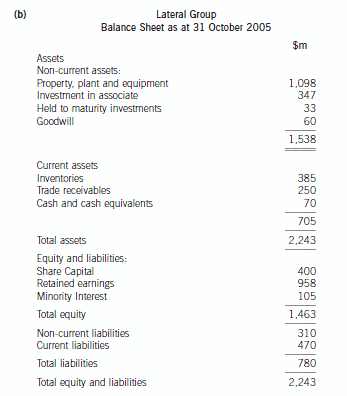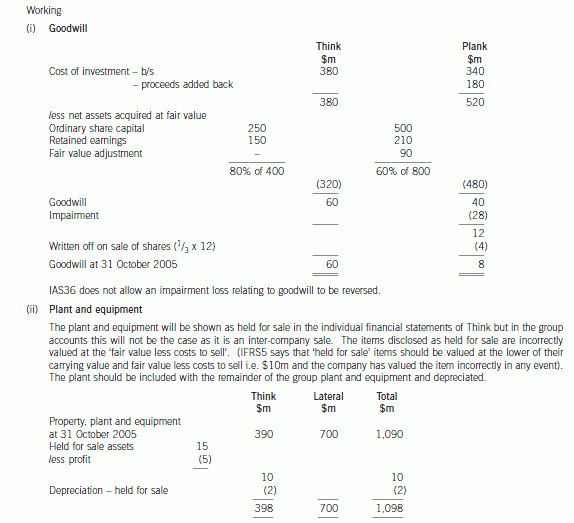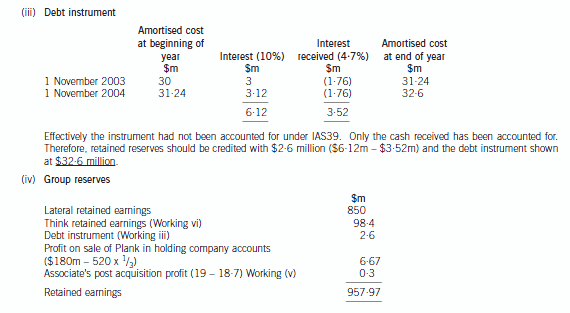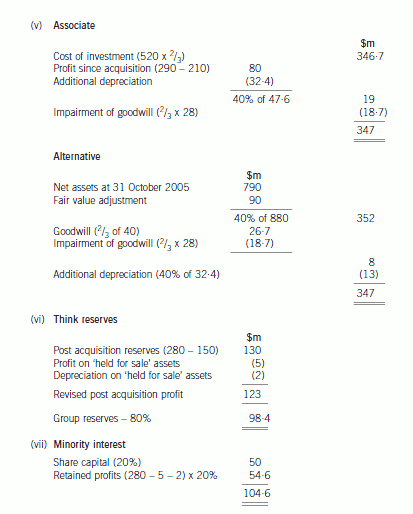内蒙古考生:ACCA考试内容是什么?难度和专业课相比怎样?
发布时间:2020-01-09
第一次听闻ACCA考试的同学可能只知道其证书的含金量是十分高的,但当听到ACCA考试的考试科目多达13科的时候,可能有些同学就会打退堂鼓了。其实,51题库考试学习网想告诉大家的是,ACCA考试并不是高不可攀的,任何一场考试他都是有难度的,但只要自己付出过汗水,努力过,即使没有通过也不会留下遗憾。可能这样说大家还是感觉到很空洞吧,那么51题库考试学习网就结合当下同学们目前正在学习的学校专业课程与ACCA考试的科目进行比较,让你们更加直观地感受ACCA考试的具体内容。
和大学课程相比,ACCA的难度如何?
相比较国内会计师考试,ACCA对于报考要求很低,最明显的一点就是它不要求你需要从事此行业到一定年限才可以报考,即使是没接触过会计学科知识的人,通过ACCA的考试的系统化的学习、记忆和理解,也能建立起系统的会计学科知识。
ACCA考试分为基础阶段和专业阶段。因为ACCA总部是在英国,所以考试的难度是以英国大学学位考试的难度为标准,换到国内的水平就是:基础课程的难度相当于学士学位高年级课程的考试难度,专业阶段课程的考试相当于硕士学位的考试。再说简单点就是,基础阶段是国内大学水平,专业阶段是国内硕士水平。所以更大学的专业课程相比,基础阶段的知识还能勉强用大学所学的知识应付,而到了专业阶段就可能不适用了,因此必须要去学习专业阶段的知识。ACCA的课程使学员全面掌握财务、财务管理、审计、税务及经营战略等方面的专业知识,提升分析能力并拓宽战略思维。
与国内注会拔高式的考试内容不同,ACCA的知识体系是呈阶梯式递进的。难度也是层层递进的,因此即便是非财会专业出身,也不必担心吃不透某个基础概念的状况。如果你是财会专业出身,ACCA学起来不但更为轻松,高级阶段教授的知识内容也能你让你提前领会在校期间学不到的商业奥义。
考完ACCA需要多长时间呢?
听到考试科目多达13科目是不是被吓到了?一次性同时备考13个科目压力还是太大了。所以,ACCA官方给了你7年时间去完成整个考试,不过大家不要怕,基本上大多数学生只需要花2-4年的时间就可以全部考完。当然前提是你每个阶段都是认真学习的情况下。
英语不好学ACCA会不会困难?
简单来说,ACCA里的英文水准可能等同于国家三级水准,只要在大学考试通过了CET-4的同学,一般来说没什么参加ACCA考试不会吃看不懂单词的亏。学ACCA不是学英语,只要表述没有问题,考官不会在意你用的是什么华丽的句式或者无伤大雅的语病。而且语感这东西,在学习的过程中是能逐渐培养出来的,也就是所谓的“套路”。
需要注意的地方是:ACCA里很多是会计专业词汇,我们平时学的英语单词很少用上。而且在ACCA培训班,老师解释的时候都用中文,这样字典也不用查了,况且不少专业词汇的用法在普通字典里是查不到的,比如premium既可以解释为“溢价”,又可以解释为“定金/押金”,普通字典查不到这种解释,大学四六级雅思什么的也没有这种解释。所以说,51题库考试学习网建议大家购买专业的英文字典,可以去ACCA官网了解一下相关字典是通过何种渠道获得的。
ACCA能否通过,要看你付出到什么程度。
ACCA考试虽然有一定的难度,但是绝对是在大家能力范围之内的——只要你努力。如果你想不花精力和时间就通过ACCA的话,通过考试也只是痴人说梦。想要通过ACCA肯定是要做出一定的牺牲的。俗话说,贵在坚持,也就是说,ACCA的难度其实取决于你自己。通过率的高低其实与我们没有太大的关系,通过率再高,你不认真学习,也是通不过的。
如何平衡ACCA考试与大学生活
在大学生活中,如果备考ACCA考试,那么首先要面临的问题就是如何平衡考试与大学生活了。大学专业课的绩点与排名,对自己能否拿到学位证和学历证以及对今后的考研或出国来说,还是有着至关重要影响的,所以51题库考试学习网建议在ACCA的复习备考的基础上要首先完善好大学的相关课程和作业,因为毕竟ACCA考试的年限长达7年,而大学也就4年左右。所以,该做取舍的时候就还是可以做取舍的。建议大家在大学期间每一个考季不用报考满4个科目,根据自己的学习时间来制定相应的计划就可以了。
另外,合理利用自己周末的时间,这就是大学生复习时间的主要来源。对当天所讲的内容进行全面的复习与刷题会比较困难,所以我个人建议,对于一些难度大的知识点要确保在讲授当天及时复习巩固,其他的知识点如果来不及,可以分散到周一到周五去抽一定的时间复习,并保证一定的刷题量,这样才能加深对相应知识点的印象,提高复习的效率,减轻备考时的工作量。
在文章的最后,51题库考试学习网想与大家分享一句话:“人不能漂泊一辈子,但在声嘶力竭之前就安居乐业也未免可惜。”既然选择了报考ACCA这条道路,那就坚持下去,让生命在汗水与努力中呐喊出最灿烂的色彩,大家加油~。
下面小编为大家准备了 ACCA考试 的相关考题,供大家学习参考。
(b) Prepare a consolidated balance sheet as at 31 October 2005 for the Lateral Group in accordance with
International Financial Reporting Standards. (21 marks)




(e) Job instruction. (3 marks)
(e) Job instruction is a one to one method of training through which the trainee is shown how to fulfill a task and then allowed to get on with that task. It is a systematic approach to training involving immediate supervision and by allowing the trainee to complete the task is a cost effective way of training.
(b) You are an audit manager in a firm of Chartered Certified Accountants currently assigned to the audit of Cleeves
Co for the year ended 30 September 2006. During the year Cleeves acquired a 100% interest in Howard Co.
Howard is material to Cleeves and audited by another firm, Parr & Co. You have just received Parr’s draft
auditor’s report for the year ended 30 September 2006. The wording is that of an unmodified report except for
the opinion paragraph which is as follows:
Audit opinion
As more fully explained in notes 11 and 15 impairment losses on non-current assets have not been
recognised in profit or loss as the directors are unable to quantify the amounts.
In our opinion, provision should be made for these as required by International Accounting Standard 36
(Impairment). If the provision had been so recognised the effect would have been to increase the loss before
and after tax for the year and to reduce the value of tangible and intangible non-current assets. However,
as the directors are unable to quantify the amounts we are unable to indicate the financial effect of such
omissions.
In view of the failure to provide for the impairments referred to above, in our opinion the financial statements
do not present fairly in all material respects the financial position of Howard Co as of 30 September 2006
and of its loss and its cash flows for the year then ended in accordance with International Financial Reporting
Standards.
Your review of the prior year auditor’s report shows that the 2005 audit opinion was worded identically.
Required:
(i) Critically appraise the appropriateness of the audit opinion given by Parr & Co on the financial
statements of Howard Co, for the years ended 30 September 2006 and 2005. (7 marks)
(b) (i) Appropriateness of audit opinion given
Tutorial note: The answer points suggested by the marking scheme are listed in roughly the order in which they might
be extracted from the information presented in the question. The suggested answer groups together some of these
points under headings to give the analysis of the situation a possible structure.
Heading
■ The opinion paragraph is not properly headed. It does not state the form. of the opinion that has been given nor
the grounds for qualification.
■ The opinion ‘the financial statements do not give a true and fair view’ is an ‘adverse’ opinion.
■ That ‘provision should be made’, but has not, is a matter of disagreement that should be clearly stated as noncompliance
with IAS 36. The title of IAS 36 Impairment of Assets should be given in full.
■ The opinion should be headed ‘Disagreement on Accounting Policies – Inappropriate Accounting Method – Adverse
Opinion’.
1 ISA 250 does not specify with whom agreement should be reached but presumably with those charged with corporate governance (e.g audit committee or
2 other supervisory board).
20
6D–INTBA
Paper 3.1INT
Content
■ It is appropriate that the opinion paragraph should refer to the note(s) in the financial statements where the matter
giving rise to the modification is more fully explained. However, this is not an excuse for the audit opinion being
‘light’ on detail. For example, the reason for impairment could be summarised in the auditor’s report.
■ The effects have not been quantified, but they should be quantifiable. The maximum possible loss would be the
carrying amount of the non-current assets identified as impaired.
■ It is not clear why the directors have been ‘unable to quantify the amounts’. Since impairments should be
quantifiable any ‘inability’ suggest a limitation in scope of the audit, in which case the opinion should be disclaimed
(or ‘except for’) on grounds of lack of evidence rather than disagreement.
■ The wording is confusing. ‘Failure to provide’ suggests disagreement. However, there must be sufficient evidence
to support any disagreement. Although the directors cannot quantify the amounts it seems the auditors must have
been able to (estimate at least) in order to form. an opinion that the amounts involved are sufficiently material to
warrant a qualification.
■ The first paragraph refers to ‘non-current assets’. The second paragraph specifies ‘tangible and intangible assets’.
There is no explanation why or how both tangible and intangible assets are impaired.
■ The first paragraph refers to ‘profit or loss’ and the second and third paragraphs to ‘loss’. It may be clearer if the
first paragraph were to refer to recognition in the income statement.
■ It is not clear why the failure to recognise impairment warrants an adverse opinion rather than ‘except for’. The
effects of non-compliance with IAS 36 are to overstate the carrying amount(s) of non-current assets (that can be
specified) and to understate the loss. The matter does not appear to be pervasive and so an adverse opinion looks
unsuitable as the financial statements as a whole are not incomplete or misleading. A loss is already being reported
so it is not that a reported profit would be turned into a loss (which is sometimes judged to be ‘pervasive’).
Prior year
■ As the 2005 auditor’s report, as previously issued, included an adverse opinion and the matter that gave rise to
the modification:
– is unresolved; and
– results in a modification of the 2006 auditor’s report,
the 2006 auditor’s report should also be modified regarding the corresponding figures (ISA 710 Comparatives).
■ The 2006 auditor’s report does not refer to the prior period modification nor highlight that the matter resulting in
the current period modification is not new. For example, the report could say ‘As previously reported and as more
fully explained in notes ….’ and state ‘increase the loss by $x (2005 – $y)’.
(ii) Explain the ethical tensions between these roles that Anne is now experiencing. (4 marks)
(ii) Tensions in roles
On one hand, Anne needs to cultivate and manage her relationship with her manager (Zachary) who seems convinced
that Van Buren, and Frank in particular, are incapable of bad practice. He shows evidence of poor judgment and
compromised independence. Anne must decide how to deal with Zachary’s poor judgment.
On the other hand, Anne has a duty to both the public interest and the shareholders of Van Buren to ensure that the
accounts do contain a ‘true and fair view’. Under a materiality test, she may ultimately decide that the payment in
question need not hold up the audit signoff but the poor client explanation (from Frank) is also a matter of concern to
Anne as a professional accountant.
声明:本文内容由互联网用户自发贡献自行上传,本网站不拥有所有权,未作人工编辑处理,也不承担相关法律责任。如果您发现有涉嫌版权的内容,欢迎发送邮件至:contact@51tk.com 进行举报,并提供相关证据,工作人员会在5个工作日内联系你,一经查实,本站将立刻删除涉嫌侵权内容。
- 2020-01-10
- 2020-05-13
- 2020-01-15
- 2020-02-05
- 2020-01-10
- 2020-05-14
- 2020-01-09
- 2020-01-10
- 2020-05-09
- 2020-01-10
- 2020-01-10
- 2020-01-09
- 2021-06-27
- 2020-01-10
- 2020-01-10
- 2020-04-02
- 2020-01-10
- 2020-04-18
- 2020-01-10
- 2020-05-15
- 2020-03-28
- 2020-01-10
- 2020-01-10
- 2021-06-25
- 2020-03-07
- 2020-01-10
- 2020-01-10
- 2020-01-10
- 2020-01-10
- 2020-05-09